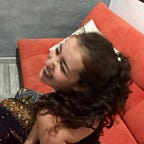Tintico
A Material and Cultural Exploration
This project started as an encapsulation of my past (my history and heritage) and my present/future (my ongoing values and priorities). But for this proposal, I sought to expand to the representation of Colombian people and their relationship with coffee as a whole.
The term “Tinto’’ is what the working class coffee is called in Colombia. It roughly translates to “inky water”, and is generally meant for domestic consumption as it is usually made from coffee beans that don’t meet the quality standard for the coffee that gets exported. In other words, the world gets Colombia’s best coffee, while Colombians are left to drink whatever doesn’t make the cut. But it’s not as bad as it sounds, tinto has transformed into “tintico”, a diminutive of the original and a widely used term of endearment. This is because, beyond the quality of the product, tintico has become a ritual for the native Colombian. Tintico is served first thing in the morning, in the middle of the day, and ofttimes even in the evening. It is a form of bonding and sharing between family and friends, and also an enhancement to moments of solitude, reflection, and productivity.
By thinking of used coffee as a potential resource instead of as a waste product, I also wanted this project to speak to how we think about the materials we use, as well as their origin and impact on the environment.
In a few words, what does Tinto represent to you?
Remote conversation with family members (Translated from Spanish)
It is my first thought when I first wake up, and my “excuse to take a break” when I’m working and I need a brief pause. I think of “fragrance, flavor, and home”.
- DadI think about fragrance, conversation, and pleasure.
- Tía RossyCompletely agree Rocío! I also think of chatting and just shooting the breeze.
- DadTo me, it means sharing with another person, in our case to yearn and remember.
- Tío JairoOf course Mauro, when we used to smoke cigarettes it was the perfect complement!
- Tía RossyWhen I was a teen, I don’t know why suddenly overnight, like a good coffeemaniac, I started referring to tintico as a TIN — TAN… Meaning an awakening of energy; and that accompanied by a piece of bread made it that much better!!! Although a cigarette is also good!
- Tío ChiquiGood morning family! I just happen to be drinking a Tin tan like Chiky calls it. And enjoying this conversation.
- Tío HerbertSo I have two responses, my mom was a dressmaker. With a sewing machine, she was able to pay for everything for me and my sisters, after she and my dad split. A small black cup of coffee always rested next to her sewing machine… her tintico. It was one of those tiny cups that I always found so sophisticated. There stood her minute cup, from morning until night, in perfect harmony with the sound of the sewing machine’s pedal, accompanying all of the remaining scraps of fabric. Overall though, it reminds me of my mom. Now, tintico is my safe space, the place where I escape to when I am exhausted, the anchor when I need a pause to know what to say…. I hold that cup of tintico in my hand and the world stops. It is also a place of inspiration. If I’m looking for an idea, I can find it inside the tintico. Ok I think I might have rambled a bit but I got inspired. Thank you for this question, whose response has brought me much happiness!
- Tía Zaira
Materials
- Used coffee grounds
- Corn starch
- Glycerin
- Honey in wax
- Peanut shells
- Honeysuckle tea
- White vinegar
- Sugar
- Tinfoil
- Molding tools
Playful Experimentation and Fabrication Process
Thinking Sustainably: Rethinking waste products as material
Playing with a wide variety of materials and documenting different recipes/processes not only provided a means of revisiting things that worked and eliminating things that didn’t, but also allowed for the creative process to flow freely.
Recipe A: Uses milk, paper, more glycerin, and less cornstarch, in addition to the main materials listed above.
Recipe B: Uses milk, paper, less glycerin, and more cornstarch, in addition to the main materials listed above.
Recipe C: Uses water, house plant leaves, less glycerin, and more cornstarch, in addition to the main materials listed above.
Proof of Concept
The first round of coffee cups I sculpted was made using recipe C, which used plant leaves and less glycerin. I also used more coffee grounds which made the mixture too unstable and harder to shape. The cups were much more fragile before fully drying.
The final set of cups, pictured below, were much more solid and sturdy than their earlier counterparts. Although it must be said, sculpting with coffee grounds is still quite challenging.
Tintico is a project that encompasses both sustainable making and Colombian heritage in the form of handmade coffee cups. Cultural background and tradition inform the narrative of the project, while sustainability dictates its method of fabrication, materiality, and the final aesthetic of the coffee cups. All coffee grounds used for the earlier and final prototypes were collected overtime at home from grounds I actually used to brew coffee, as well as other materials like recycled paper, reused black tea, and egg and peanut shells, in an effort to highlight sustainability as an important factor and main building block of this project.
